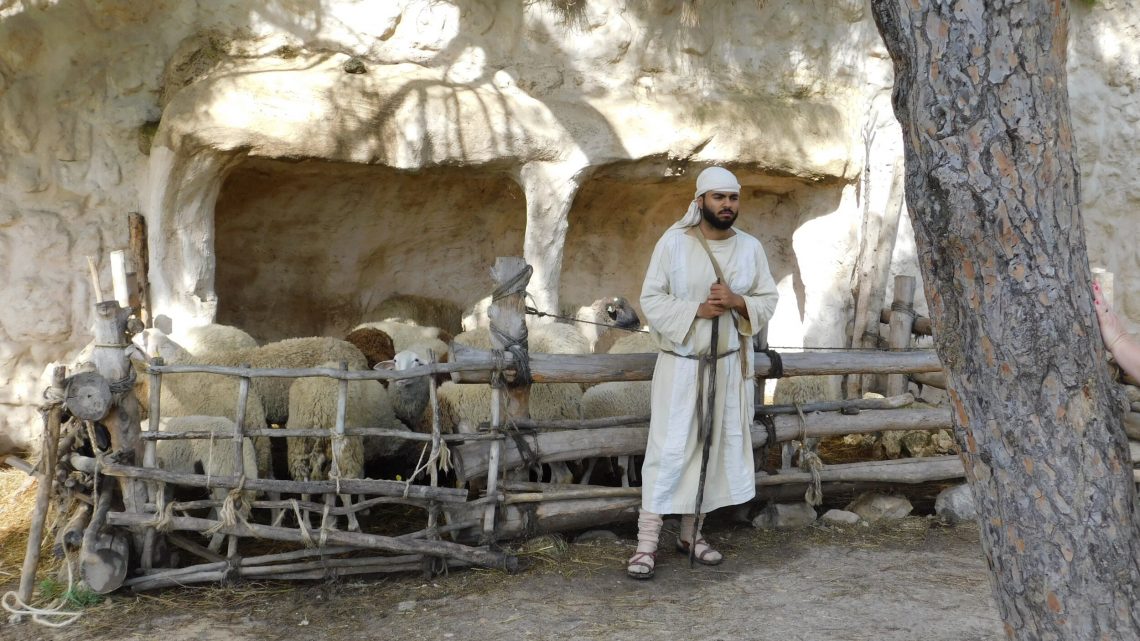Nazareth
August 11, 2021
North of the Jezreel Plain is a ridge with a hollow in its top. Here lay the village where Jesus grew up, containing a few hundred people.
It did not spread beyond the area occupied now by the churches of the Annunciation and St. Joseph.
The Church of the Annunciation (built in 1970) contains, in fact, two churches. The building rises in splendor over a humble cave where tradition locates Gabriel’s tidings to Mary (Luke 1). This was the focus of a church on the site 1500 years ago, whose simple outline, facing east, is today used for pilgrim masses. A large opening in the ceiling communicates pilgrim song to the elaborate upper church (used by the local congregation), whose inner dome unfolds toward the church below like expanding waves of sound, decorated with a recurring pattern of A,V and M: Ave Maria. The “meeting” of upper and lower, complex and simple, symbolizes the particular encounter of divine and human that the building celebrates. In the upper, are representations of Mary and her infant from many different nations, each in its own style: a monument to diversity amidst unity of faith.
Outside is the bedrock into which the ancient villagers cut storage rooms and cisterns. After ambling some 500 yards through the open-air market of today’s bustling city (70,000 Arab Christians and ), is the area of the ancient water source: three springs feed into a channel at the base of the hollow’s northern slope. Today their water flows through the 18th-century Church of St. Gabriel. Here, 2000 years ago, the women would have laundered while their children played nearby.
Drive up the slope, first to the north for a view of Sepphoris four miles away (easy commute for a young carpenter), then to the south, where the villagers sought to throw Jesus from the ridge 8.., for a panorama over the Jezreel Plain, including the village of Nain on a slope to the south8.2..
8.1. Luke 4:29
8.2. Luke 7:11

